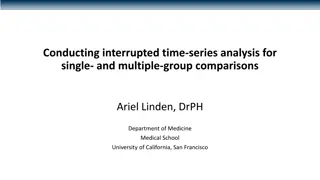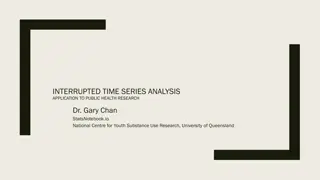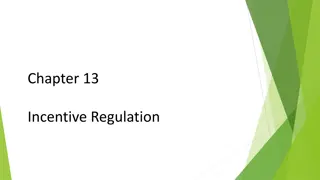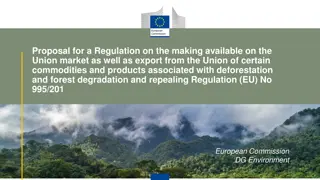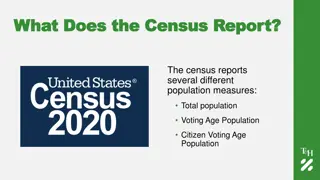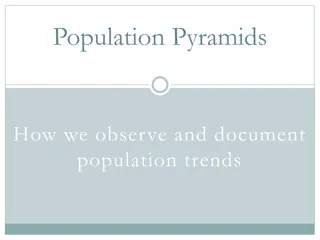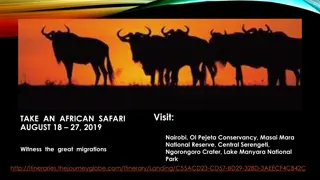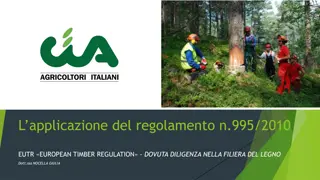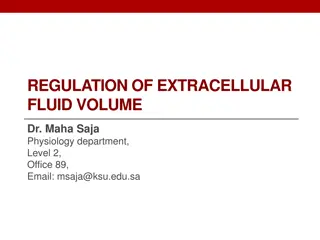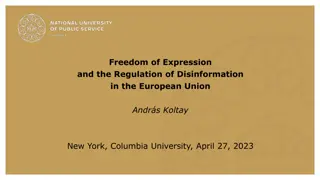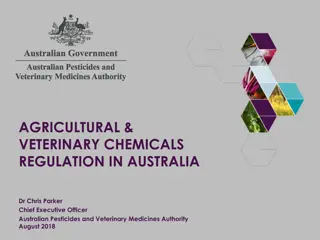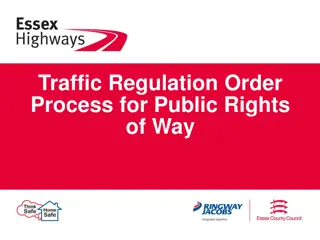Population Regulation in the Serengeti: An Interrupted Case Study
Explore the fascinating dynamics of population regulation in the Serengeti National Park through a series of slides covering factors influencing wildlife populations, such as bottom-up and top-down controls, density-dependent and independent factors, and the impact of diseases like rinderpest on migratory wildebeest populations from 1958-1978. Dive into population growth curves and the long-term effects on wildlife populations in this informative study conducted by Tony Sinclair from the University of British Columbia.
- Serengeti National Park
- Wildlife Populations
- Population Regulation
- Bottom-Up Control
- Top-Down Control
Download Presentation

Please find below an Image/Link to download the presentation.
The content on the website is provided AS IS for your information and personal use only. It may not be sold, licensed, or shared on other websites without obtaining consent from the author. Download presentation by click this link. If you encounter any issues during the download, it is possible that the publisher has removed the file from their server.
E N D
Presentation Transcript
Population Regulation in the Serengeti An Interrupted Case Study Slide 1 of 20 Population Regulation in the Serengeti
Populations in Serengeti National Park Speaking: Tony Sinclair, University of British Columbia Slide 2 of 20 Population Regulation in the Serengeti
What Controls a Populations Size? Factor Bottom-up or top- down? Density-dependent or independent? Top-down Bottom-up Slide 3 of 20 Population Regulation in the Serengeti
Bottoms-up! Wildebeest (nonmigratory) Which of the following is a bottom-up factorthat could impact the population sizes of these herbivores? a. predators, like lions b. parasites c. rainfall d. earthquakes Buffalo Wildebeest (migratory) Slide 4 of 20 Population Regulation in the Serengeti
What Happened to Migratory Wildebeest? (19581978) Speaking: Tony Sinclair, University of British Columbia Slide 5 of 20 Population Regulation in the Serengeti
Migratory Wildebeest from 19581978 (Part A) Which symbol represents the number of wildebeest? Which represents the prevalence (%) of wildebeest with rinderpest? How do you know? Slide 6 of 20 Population Regulation in the Serengeti
Migratory Wildebeest from 19581978 (Part B) The elimination of rinderpest impacted the wildebeest population. What type of factor is rinderpest? a. density-independent, top-down b. density-independent, bottom- up c. density-dependent, top-down d. density-dependent, bottom-up Slide 7 of 20 Population Regulation in the Serengeti
Migratory Wildebeest from 19581978 (Part C) Consider the population growth curve shown. What type of growth is this? a. exponential b. linear c. logistic d. geometric What would happen to the population in the long term? Slide 8 of 20 Population Regulation in the Serengeti
What Happened to Migratory Wildebeest? (19782003) Speaking: Tony Sinclair, University of British Columbia Slide 9 of 20 Population Regulation in the Serengeti
Migratory Wildebeest from 19782003 (Part A) Consider the entire population growth curve shown. What type of growth is this? a. exponential b. linear c. logistic d. geometric Slide 10 of 20 Population Regulation in the Serengeti
Migratory Wildebeest from 19782003 (Part B) What is the approx. carrying capacity of the wildebeest population? a. 800,000 b. 900,000 c. 1,300,000 d. 1,500,000 Slide 11 of 20 Population Regulation in the Serengeti
Migratory Wildebeest from 19782003 (Part C) In 1958, the wildebeest population was small due to rinderpest. What factors affected the population from 1980 2000? Were they density-dependent or density-independent? Slide 12 of 20 Population Regulation in the Serengeti
What Happened to Nonmigratory Wildebeest? (Part A) This figure explores how predators impact nonmigratory populations of Serengeti herbivores. What might explain the relationship between predation and herbivore weight? Species shown are the oribi (O), impala (I), topi (T), zebra (Z), African buffalo (B), giraffe (G), black rhino (R), hippo (H), and African elephant (E). Slide 13 of 20 Population Regulation in the Serengeti
What Happened to Nonmigratory Wildebeest? (Part B) This figure explores how predators impact nonmigratory populations of Serengeti herbivores. Some populations have low rates of predation. What factors are likely to limit their size? Species shown are the oribi (O), impala (I), topi (T), zebra (Z), African buffalo (B), giraffe (G), black rhino (R), hippo (H), and African elephant (E). Slide 14 of 20 Population Regulation in the Serengeti
What Happened to Nonmigratory Wildebeest? (Part C) What percentage of nonmigratory wildebeest deaths are caused by predation? a. 100% b. 85% c. 45% d. 25% Species shown are the oribi (O), impala (I), topi (T), wildebeest (W), zebra (Z), African buffalo (B), giraffe (G), black rhino (R), hippo (H), and African elephant (E). Slide 15 of 20 Population Regulation in the Serengeti
What Limits the Migratory Wildebeest Population? Speaking: Simon Mduma, Tanzania Wildlife Research Institute Slide 16 of 20 Population Regulation in the Serengeti
How Does Migration Impact Population Regulation? Speaking: Grant Hopcraft, University of Glasgow Slide 17 of 20 Population Regulation in the Serengeti
The Benefits of Migration (Part A) Migratory wildebeest populations are limited by factors that are: a. density-independent, top-down b. density-independent, bottom-up c. density-dependent, top-down d. density-dependent, bottom-up Slide 18 of 20 Population Regulation in the Serengeti
The Benefits of Migration (Part B) Nonmigratory wildebeest populations are limited by factors that are: a. density-independent, top-down b. density-independent, bottom-up c. density-dependent, top-down d. density-dependent, bottom-up Why? Slide 19 of 20 Population Regulation in the Serengeti
Apply What Youve Learned What factors might limit migratory versus nonmigratory populations of other animals in the Serengeti, such as zebras? Think of a population outside the Serengeti that you are familiar with, maybe one that lives near you. What factors do you think limit the size and growth of the population you chose? Why? Slide 20 of 20 Population Regulation in the Serengeti




